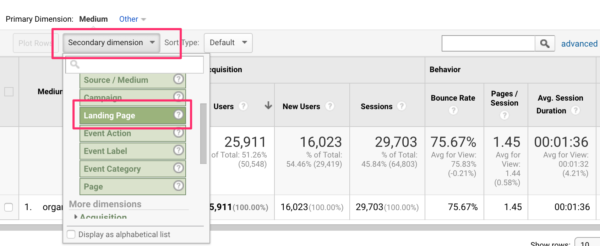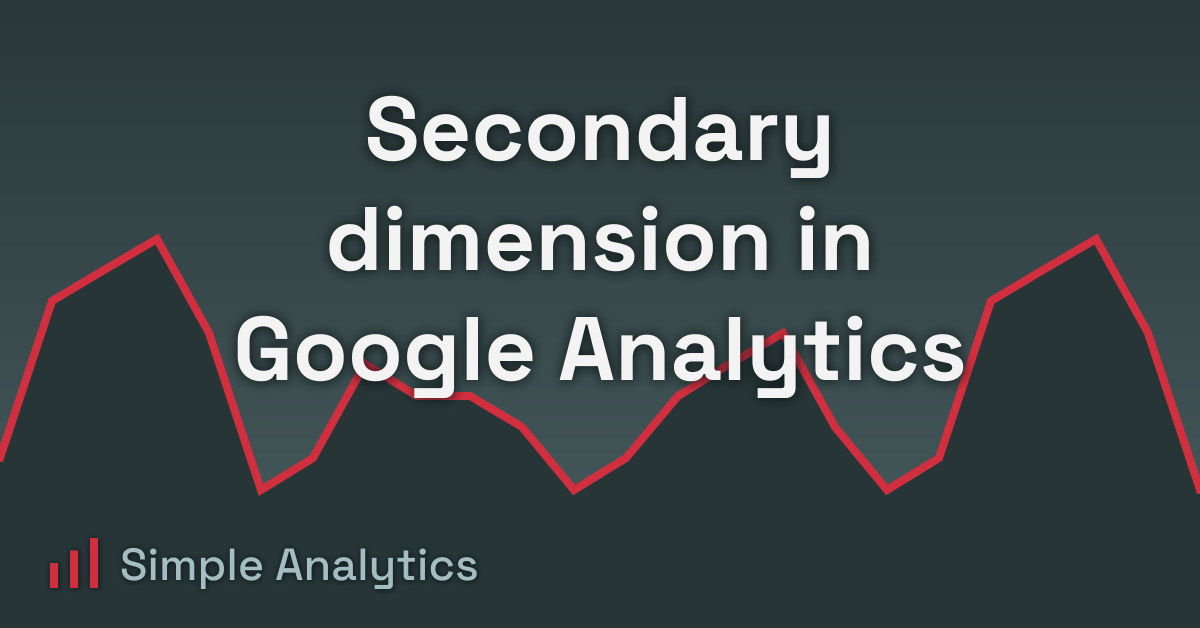4 Simple Techniques For What Is A Secondary Dimension In Google Analytics
Wiki Article
The Buzz on What Is A Secondary Dimension In Google Analytics
Table of ContentsWhat Is A Secondary Dimension In Google Analytics - TruthsWhat Is A Secondary Dimension In Google Analytics Fundamentals ExplainedRumored Buzz on What Is A Secondary Dimension In Google AnalyticsSome Known Incorrect Statements About What Is A Secondary Dimension In Google Analytics
If this does not seem clear, here are some instances: A purchase happens on a site. Its dimensions can be (yet are not restricted to): Transaction ID Voucher code Most recent website traffic resource, and so on. A customer visit to a website, and we send out the event login to Google Analytics. That event's personalized dimensions could be: Login approach Individual ID, and so on.Despite the fact that there are many measurements in Google Analytics, they can not cover all the possible scenarios. Thus personalized measurements are required. Things like Web page URL are global and use to many instances, but what happens if your business markets online programs (like I do)? In Google Analytics, you will certainly not discover any kind of dimensions associated specifically to on the internet training courses.
9%+ of services making use of GA have nothing to do with programs. And also that's why anything relevant specifically to on the internet programs need to be configured manually. Go Into Personalized Dimensions. In this article, I will certainly not dive deeper right into personalized measurements in Universal Analytics. If you wish to do so, read this guide.

The range defines to which occasions the measurement will apply. In Universal Analytics, there were 4 extents: User-scoped custom measurements are related to all the hits of a customer (hit is an event, pageview, etc). As an example, if you send User ID as a custom measurement, it will be related to all the hits of that specific session AND to all the future hits sent out by that individual (as long as the GA cookie stays the very same).
How What Is A Secondary Dimension In Google Analytics can Save You Time, Stress, and Money.
You can send out the session ID custom measurement, and also if you send it with the last occasion of the session, all the previous occasions (of the very same session) will certainly obtain the worth. This is carried out in the backend of Google Analytics. measurement uses just to that certain event/hit (with which the measurement was sent out)
That measurement will certainly be applied only to the "trial began" event. Product-scoped custom-made dimension uses only to a certain item (that is tracked with Enhanced Ecommerce functionality). Even if you send out numerous items with the exact same deal, each product might have various worths in their product-scoped custom-made dimensions, e. g.
Why am I telling you this? Because some points have actually altered in Google Analytics 4. In Google Analytics 4, the session scope is no longer readily available (a minimum of in custom-made dimensions). Google said they would add session-scope in the future to GA4. If you intend to apply a dimension to all the occasions of a specific session, you should send that measurement with every event (that can be done on the code level (gtag) or in GTM).
The Greatest Guide To What Is A Secondary Dimension In Google Analytics
It can be in a cookie, data layer, or somewhere else. From currently on, custom dimensions are either hit-scoped or user-scoped (formerly called User Features). User-scoped customized dimensions in GA4 job in a similar way to the user-scoped dimensions in Universal Analytics but with some differences: In Universal Analytics, a user-scoped custom-made measurement (collection in the center of the user session) was related to EVERY event of the exact same session (also if some event happened before the measurement was established).Even though you can send additional resources out personalized item information to GA4, at the minute, there is no method to see it in reports appropriately. (let me know). At some point in the past, Google said that session-scoped custom measurements in GA4 would certainly be offered as well.
When it comes to personalized measurements, this range is still not offered. And currently, allow's transfer to the 2nd component of this post, where I will reveal you just how to configure customized dimensions and where to locate them in Google Analytics 4 records. First, let me begin with a general summary of the procedure, and after that we'll have a look at an instance.

If you utilize it to mainly stream information to Big, Query and afterwards do the evaluation there, you can send any type of personalized parameters you want, and also they will certainly be visible in Big, Inquiry. You can simply send out the occasion name, say, "joined_waiting_list" and after that consist of the criterion "course_name". Which's it.
8 Simple Techniques For What Is A Secondary Dimension In Google Analytics
Because situation, you will need to: Register a parameter as a custom interpretation Beginning sending out customized parameters with the events you desire The order DOES NOT issue right here. But you should do that rather a why not check here lot at the exact same time. If you start sending out the specification to Google Analytics 4 and just register it as a personalized dimension, say, one week later on, your records will be missing out on that a address person week of data (due to the fact that the enrollment of a custom-made dimension is not retroactive).Every time a site visitor clicks on a food selection thing, I will certainly send an occasion and two extra parameters (that I will certainly later on register as customized measurements), menu_item_url, as well as menu_item_name.: Food selection link click tracking trigger problems differ on most internet sites (since of various click classes, IDs, and so on). Try to do your ideal to apply this instance.
Go to Google Tag Supervisor > Sets Off > New > Simply Hyperlinks. By creating this trigger, we will certainly make it possible for the link-tracking functionality in Google Tag Supervisor.
After that go to your web site and also click any of the menu web links. In fact, click at the very least two of them. Go back to the sneak peek mode, as well as you must begin seeing Link Click events in the preview setting. Click the initial Link, Click event as well as most likely to the Variables tab of the preview mode.
Report this wiki page